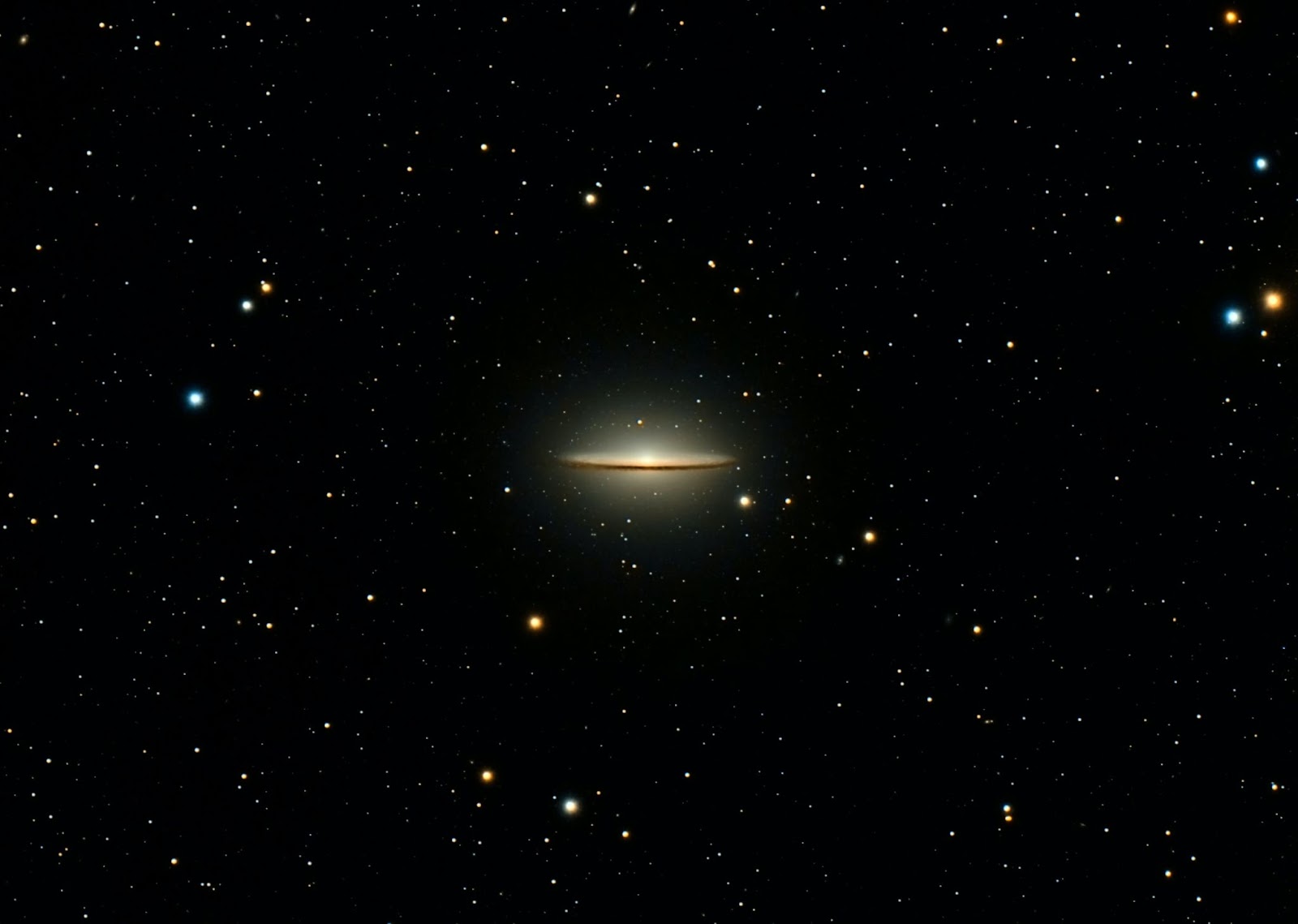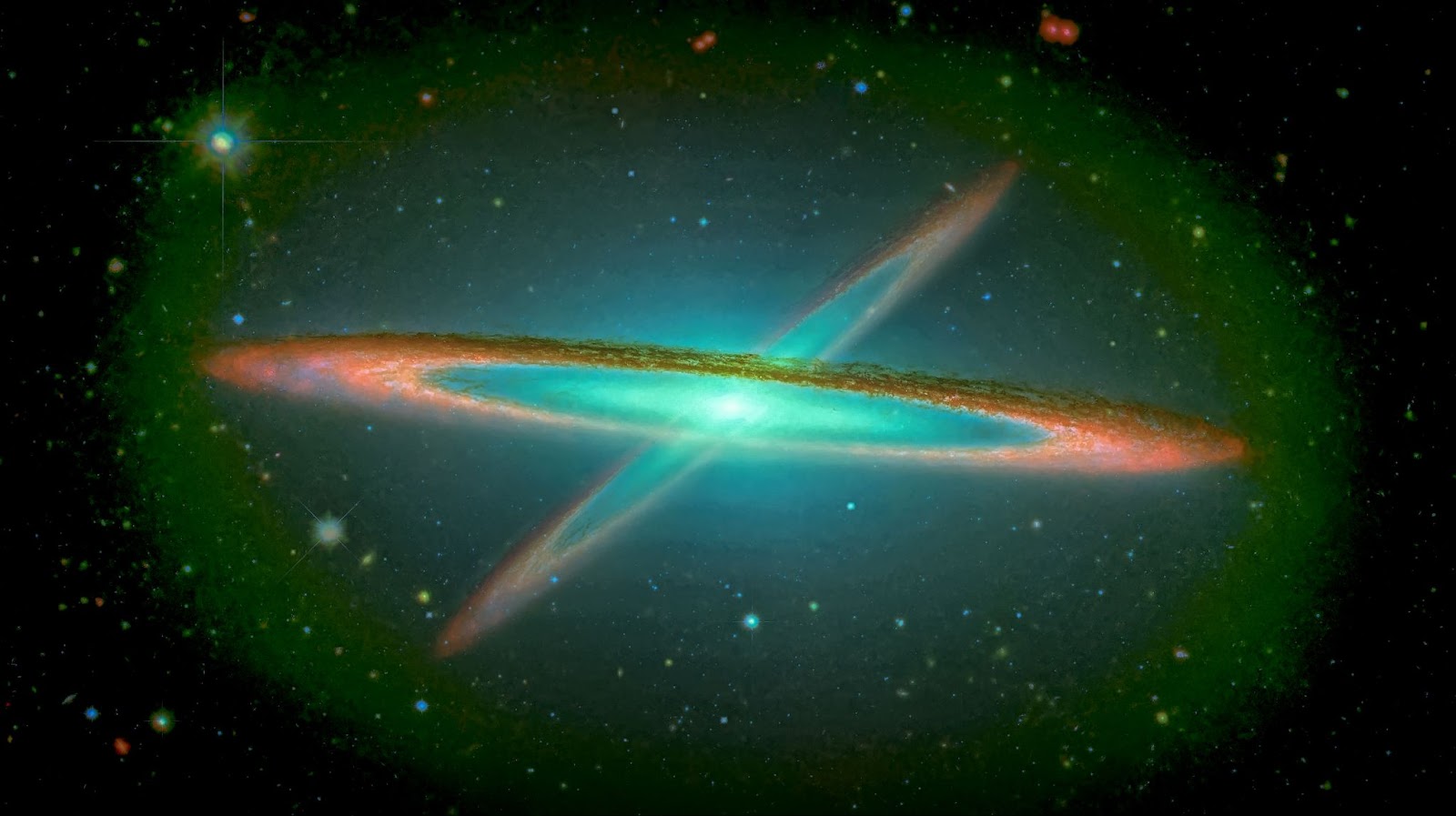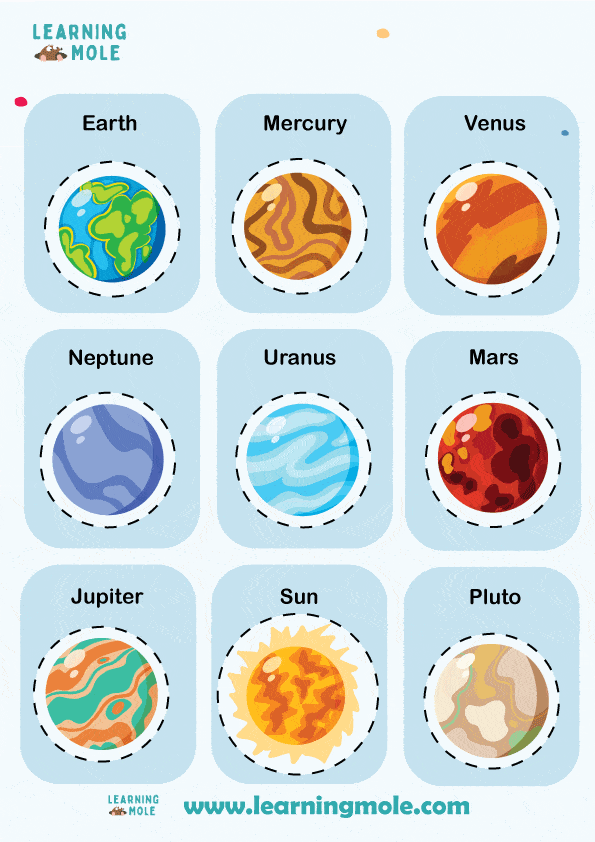
What Is the Sombrero Galaxy? And Why Is It So Majestic?
Sombrero, or sombrero de charro, is the traditional, wide brimmed, Mexican horseman hat. So what exactly does it have to do with space?
Well, this is what today’s adventure is about. But before we jump right into it, let’s retrieve some basic information about space.
Ever since life on Earth began, we have always been curious pretty much about everything around us as well as ourselves. We used seeds and water and started agriculture. We came across animals and domesticated them. We rubbed rocks to make a fire. And we looked at the vast, blue sky and wondered if there was anything that lay beyond it.
Although space exploration as a science became notably salient in the mid-20th-century during the Space Race between the United States and the Soviet Union, it had already started thousands of years ago. Our ancestors, from whom we inherited curiosity, made observations of the stars and planets and used mathematics to understand the cosmos.
Thanks to their findings and those that followed them up until today, we know much about the universe. For instance, we understand that every space object spins on its axis and orbits another bigger object.
The Moon orbits the Earth. The Earth, together with seven other smaller and bigger planets, revolve around the Sun, the dazzling star that provides us with light and warmth.
This group of spinning and orbiting objects makes up a star or planetary system. We know ours as the Solar System.
Way before it referred to an English milk chocolate bar, the term ‘galaxy’ was used to describe thousands of star systems that revolve around giant black holes. Our galaxy, called the Milky Way, has 100 billion stars at the minimum; each is orbited by at least one planet. On the other hand, Sagittarius A* is the supermassive black hole residing at the centre of the Milky Way and pulling every other object to it.
Ever since the telescope was invented, the search for galaxies never stopped. From the first Galilean Telescope, the first to be pointed at the sky, to the Hubble Space Telescope and the James Webb Space Telescope, scientists could find out around (or maybe even more) 100 billion galaxies in the vast universe.
One of the earliest discovered and most unusual galaxies is the Sombrero Galaxy. And this is what we precisely are discussing in this lesson.
So let’s hop into it.
What is the Sombrero Galaxy?
Like the Milky Way, the Sombrero Galaxy is a system of billions of stars and space objects attracted to and orbiting a gigantic black hole at its centre.
Speaking of distances, we can pretty much consider the Sombrero Galaxy as one of our distant neighbours. It is the fifth closest galaxy to the Milky Way, as far as 29.31 million light-years.
If you remember closely, a light-year is the unit that measures distances in space. One light-year equals the distance light travels in a year. Given that the speed of light is 300,000 km/s, one light-year equals nine trillion km. Therefore, the Sombrero Galaxy is 263.79 quintillion km. A quintillion is one followed by 18 zeros! Unbelievable, is it not?
Over 100 billion stars are found in the Sombrero Galaxy, which is 60,000 light-years or 540,000 trillion km across. Though the Milky Way has almost the same number of stars, it is much larger than the Sombrero Galaxy, with a diameter of 105,700 light-years.
Having said that, it is believed that the two galaxies are the same age, around 10-13 billion years old.
Interestingly, scientists concluded that there was a black hole at the centre of the Sombrero Galaxy only in 1990, although the galaxy itself was discovered over two hundred years before that. Despite how major this black hole discovery was, we can boil it down to some basic physics principles.
Everything in the universe has a mass and, therefore, gravity. So objects are pulled to one another because of that gravity. But we know that the larger the mass, the greater the gravitational pull. So small objects are pulled more strongly by larger objects and forced to orbit them. This is how the Moon orbits the Earth, and how the Earth orbits the Sun.
In the same way, the greater the gravitational pull, the faster the small object orbits the large one. For instance, the closest planet to the Sun, Mercury, is the fastest planet in our Solar System. It orbits the Sun at the speed of 47 km/s.
On the other hand, Neptune, the most distant planet from the Sun, has an orbital speed of just 5.43 km/s.
Now back to the Sombrero Galaxy.
Scientists found out that the stars near the centre of the Sombrero Galaxy were revolving at a tremendously high speed. Such a speed could not be possible unless an equally tremendous gravitational pull was exerted on those stars, a force that only comes from black holes.
Consequently, scientists concluded that there must be a super colossal black hole at the centre of the Sombrero Galaxy. They also inferred that it must be a billion times the mass of our Sun to have such an enormous gravitational pull.
What does the Sombrero Galaxy look like?
As seen by the Hubble Space Telescope, the Sombrero Galaxy somehow resembles Saturn, the sixth planet in our Solar System.
First off, it looks a little tilted. Its core, known as the galaxy nucleus, is white and bulging. It is made of old, dazzling stars whose radiation creates this white, elliptical bulge. This core is penetrated by a symmetrical disk that looks like Saturn’s rings.
But while Saturn’s rings are made of ice chunks and rocks, the Sombrero Galaxy disk is made of super large clouds of hydrogen gas and dust, known as dust lanes.
Those dust lanes are home to about 100 billion bright stars that spin and orbit the galaxy centre. Despite the lanes looking like a disk from the side, they actually have a spiral shape.
Since the galaxy bulge and dust lane look like the famous Mexican hat, the galaxy was named Sombrero, which means ‘hat’ in Spanish.
How can we see the Sombrero Galaxy?
According to NASA, we cannot see the Sombrero Galaxy with the naked eye. Yet, a small telescope can easily spot it because it is exceptionally bright. In astronomy, the level of brightness of a galaxy is known as its magnitude.
But since the galaxy is incredibly far away, any amateur telescope can just see a tiny bright grain of rice on the dark, bluish sky. So, to get better pictures of the Sombrero Galaxy, NASA had to use its giant, highly accurate telescope, the Hubble Space Telescope.

The Hubble Space Telescope was launched in April 1990. It orbits the Earth from an altitude of 535 km at 27 km/h. So when NASA assigned it a new task, the giant telescope did a pretty good job. It took several pictures of the distant Sombrero Galaxy back in 2003. Then, NASA assembled these pictures and got the first and so-far most detailed picture of the Sombrero Galaxy.
As we mentioned earlier, the picture of the Sombrero Galaxy shows a slightly tilted disk passing through its bright, bulged core. This is called an edge-on picture because it is taken from the side. But a picture taken from above, which is called a face-on picture, would show the famous galactic armed, spiral shape.
How was the Sombrero Galaxy discovered?
Despite the large gap between our current modern technology and what was available two hundred years ago, the Sombrero Galaxy was discovered in the late 18th century. And like with many other astronomical discoveries, it was not just one person who discovered it but, in fact, many.
One of the earliest people who described the Sombrero Galaxy was the French astronomer Charles Messier. Originally, Messier was hunting comets and exploring other deep-sky objects. With the help of his assistant, Pierre Méchain, Messier created a list of those objects they both discovered.
Currently known as the Messier Catalogue, this list includes galaxies, nebulae, and other massive sky objects Messier and Méchain telescopically observed.
During these adventures, Messier spotted the Sombrero Galaxy and wrote about it in his notes. However, he did not add it to his catalogue for some reason. And it seemed like no one knew about Messier’s notes on the new galaxy.
It was not until 1781 that Messier’s assistant, Pierre Méchain, discovered the Sombrero Galaxy on his own. Two years later, in 1783, he described it in a letter he sent to the Swiss mathematician J. Bernoulli. Soon after, the letter was published in a German astronomical publication, and everyone in the astronomy field knew about the newly discovered galaxy.
As a result, the discovery of the Sombrero Galaxy was attributed to Pierre Méchain.
Over a century later, more precisely in 1921, French astronomer Camille Flammarion found Messier’s notes and description of the Sombrero Galaxy. Flammarion added the galaxy to the Messier Catalogue as a deep-sky object among those Messier previously discovered.
The Sombrero Galaxy was then given another name, Messier 104 or M104 for short.
How was the location of the Sombrero Galaxy determined?
Interestingly, the French astronomers who discovered the Sombrero Galaxy thought it was within our Milky Way Galaxy and not outside of it. But thanks to the American astronomer Vesto Slipher, we now know that it is an independent galaxy that is way too distant from us.
So how did Slipher discover that? Well, by the redshift.
One of the facts we know about the universe is that it is expanding. But in the early 20th century, that was not yet known.
In 1912, as Vesto Slipher was studying the Sombrero Galaxy, he realised it looked redder. And red colour means the light waves have less frequency and longer wavelengths. Such a thing does not happen unless the light waves are stretched out. Light only stretches if its source is very distant and moving away. In that case, light is redshifted.

Therefore, the red colour of the Sombrero Galaxy meant it was redshifted. This also meant it was too distant to lie within the Milky Way. That was not the only thing Slipher discovered. He also detected that the Sombrero Galaxy was going away from us at 1127 km/s.
This redshift concept which proves astronomical objects are moving away from us, was the introduction to understanding how the universe is expanding.
Why not create your own galaxy!

Conclusion
And so we approach the end of today’s astronomy adventure.
In this lesson, we explored one of the most beautiful and early discovered galaxies, the Sombrero Galaxy, whose resemblance to the famous Mexican hat gave it the name Sombrero.
First, we learned some basic information about the Sombrero Galaxy. As it was formed around 11 billion years ago, the Sombrero Galaxy is home to about 100 billion stars. The oldest, brightest, and most gigantic of those stars lie near the centre and form the galaxy’s famous white bulge. On the other hand, the rest of the stars reside almost horizontally in what looks like a symmetrical disk.
Then, we moved on to the Hubble Space Telescope and how it only provided the first clear pictures of the Sombrero Galaxy in 2003, despite its discovery in the late 18th century.
Last but not least, we learned who discovered the Sombrero Galaxy and which astronomers helped construct our knowledge about it.
We hope you found today’s astronomy lesson interesting, as much as we loved writing it for you. Tell us in the comments what precisely you loved the most about the Sombrero Galaxy and whether or not you know about other different galaxies.


Leave a Reply